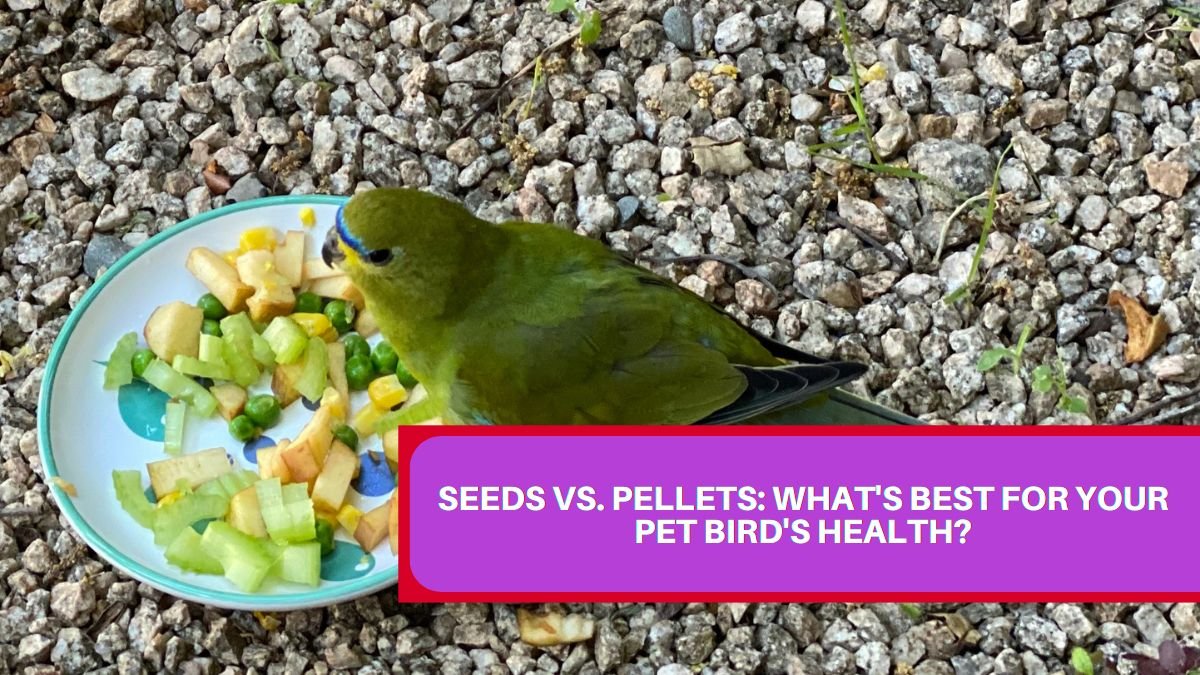Feeding birds can be a tricky task, especially if you have a pet bird at home. Understanding what to feed them is crucial for their health and happiness. In this article, we will explore the differences between seeds and pellets, the best options for your bird, and tips for preparing their meals.
A Seed Diet
Many pet birds love seeds and often prefer them to other food types. However, an all-seed diet isn’t the best choice. Seeds can lack important vitamins and minerals while being high in fat. Often, the quality of seeds for pets is low. Many seed mixes don’t have enough variety and might even contain artificial colors and unhealthy ingredients.
An all-seed diet can lead to malnutrition, which is a leading cause of health problems and death in pet birds. Seeds can be great as occasional treats, but they should not make up the entire diet. It’s important to balance seeds with other healthy food options.
A Pellet Diet
Veterinarians often recommend pellets as a better base for a pet bird’s diet, alongside fruits and vegetables. Pellets are specially made to provide balanced nutrition.
What is a Bird Pellet?
Bird pellets are small, compact foods that contain essential nutrients mixed together. Unlike seeds, high-quality pellets have the right amount of fats, vitamins, and minerals needed for your bird’s health.
Not all pellets are the same; some may have artificial colors and additives that don’t benefit your bird. It’s vital to choose a pellet with a good ingredient list.
Many birds, however, may not like pellets right away. Switching from seeds to pellets can be challenging. Some birds might even refuse to eat if they don’t recognize pellets as food. If you plan to make the switch, consult your veterinarian for advice. This change often takes time and patience.
What to Feed Pet Birds
You should work with your veterinarian to determine the best diet for your bird. Most birds will thrive on a mixed diet that includes both seeds and pellets.
In addition to seeds and pellets, it’s a good idea to include leafy greens, vegetables, fruits, grains, and nuts. While preparing a varied diet might sound complicated, you can simplify it by making “chop.” Chop is a mix of fresh foods prepared in bulk and stored in the freezer for convenience.
You can also prepare a “grain bake,” which is like a casserole made with grains, seeds, vegetables, and fruits. After baking, cut it into meal-size pieces and freeze for freshness. Don’t hesitate to ask your vet for healthy recipes suitable for your bird.
Additionally, you can learn how to sprout seeds. Sprouting can reduce the fat in seeds, making them healthier. Once the fat content decreases, the seeds become nutrient-rich.
Remember, the saying “You are what you eat!” applies to birds, too. Providing a varied and nutritious diet will help your pet bird live a longer, healthier life.
Conclusion
Choosing the right food for your bird is essential for its health. While seeds can be a fun treat, a balanced diet including pellets, vegetables, and grains is much better. Preparing meals like chop or grain bake can save you time and ensure your bird gets the nutrition it needs. Always consult with your veterinarian for the best feeding practices. A varied diet means your bird will have the best chance for a long and happy life.
FAQ’s
Can I feed my bird only seeds?
No, an all-seed diet can lead to malnutrition. It’s important to include pellets, fruits, and vegetables for balanced nutrition.
Are pellets better than seeds for my bird?
Yes, high-quality pellets are formulated to provide complete nutrition, while seeds often lack essential vitamins and minerals.
How can I help my bird transition from seeds to pellets?
Transitioning takes time. Gradually mix pellets with seeds, and consult your veterinarian for tips to make the switch easier.
What else should I include in my bird’s diet?
Along with pellets and seeds, include leafy greens, vegetables, fruits, grains, and nuts for a varied and nutritious diet.

